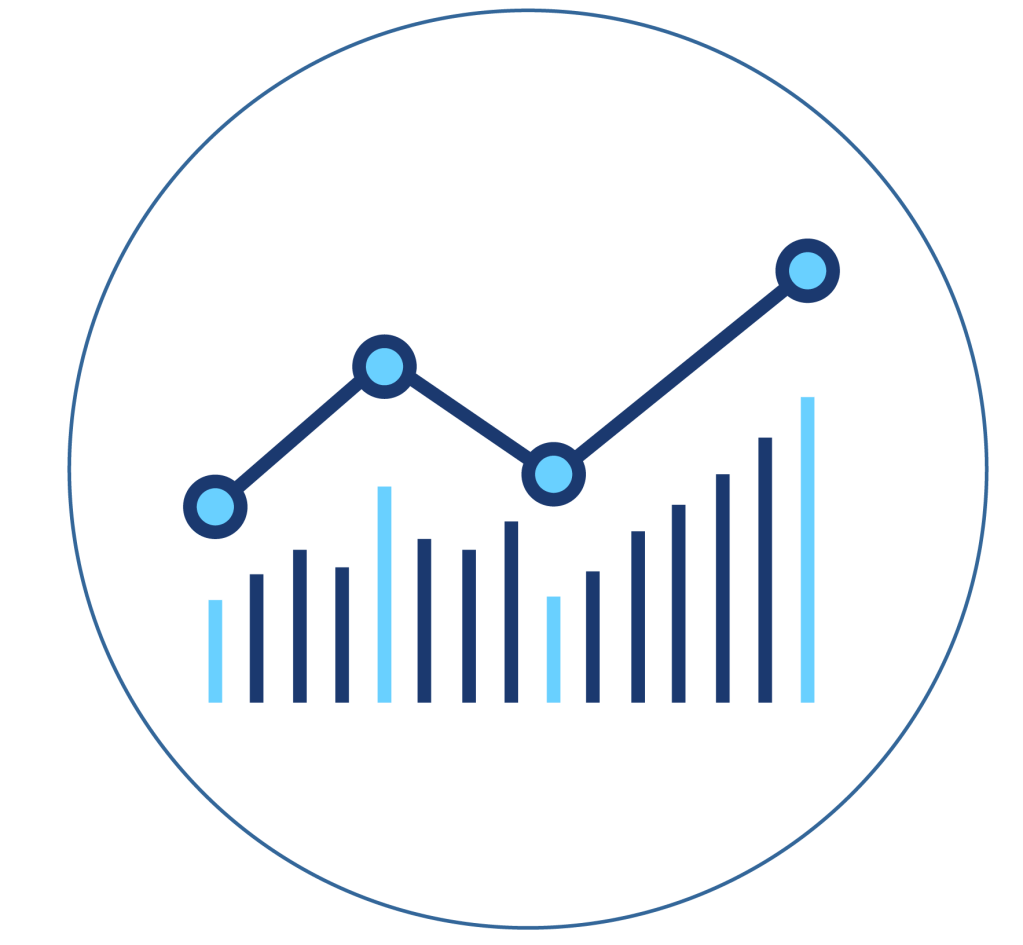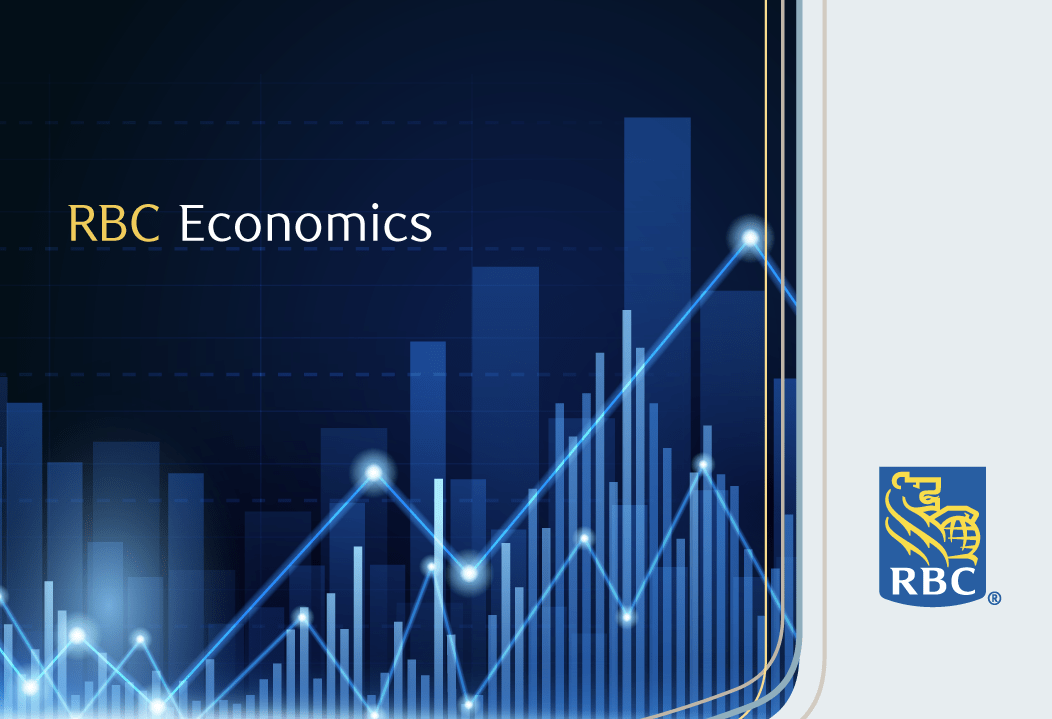Highlights:

The Canadian government’s fall budget is set to lift deficit to GDP figures. Uncertainty with rollout led us to adopt a “wait and see” approach for the impact on real near-term GDP growth.

Early data in Canada is pointing to signs of stabilizing conditions in broader labour markets, in line with our Canadian outlook that expects the worst of the economic disruptions from tariffs are behind us.

The U.S. government shutdown is not expected to have a lasting impact on the economy, lowering GDP growth in Q4 temporarily before reversing in Q1 2026 as furloughed government employees return to work.

U.S. labour markets have likely continued to soften gradually with an upward drift in the unemployment rate.

We still expect the U.S. Fed will gradually reduce the fed funds target range to 3.25%-3.5% by mid-2026, while the BoC maintain the overnight rate at 2.25% through the end of 2026.
Issue in focus:

Canadian household spending has remained strong this year despite heightened trade uncertainties, sharply slower population growth and a softening labour market. Heading into 2026, we expect persistent spending resilience could add to inflation pressures, keeping the BoC on hold.
Forecast changes:
Mammoth Canadian Federal Budget not expected to alter near-term forecast
We’ve made no changes to the forecast for the Canadian federal budget released on November 4. Despite big spending plans announced, most of the increases were well telegraphed ahead of the release and did not add significantly to near-term growth forecast.
For context, our forecast already had a 0.4 ppts add embedded in real GDP growth over 2025 and 2026 from expected high federal and provincial fiscal impulse announced/planned earlier this year.
In terms of the composition, budget measures also focused heavily on defence and infrastructure, where delays in spending outlays are likely. We adopted a ‘wait and see’ approach, but recognize fiscal policy as a source of significant upside beyond 2026 if spending can be executed as planned.
Overall, existing economic slack and better debt metrics relative to other advanced economies mean the Canadian government has room for expansionary fiscal policy. Still, rising debt and persistent deficits erode the government’s fiscal capacity to respond to future economic shocks, and risk deteriorating Canada’s credit comparisons to the small number of remaining AAA rated countries.
Trade exposed sectors in Canada are seeing early signs of stabilization
U.S. tariffs have driven sharp declines in Canadian exports and employment in targeted industries. But there are early signs of stabilization. Preliminary manufacturing sales data is pointing to an increase in Q3 sale volumes following a 3% plunge in Q2. Manufacturing employment grew consecutively in September and October to reach levels above a year ago. Leading indicators of hiring demand like Indeed job openings have been improving.
We remain cautiously optimistic about near-term Canadian economic outlook, and expect the labour market has turned a corner and the unemployment rate will gradually fall from an earlier peak of 7.1%. Headline consumer inflation is expected to loosely track BoC’s 2% target. Although resilient household consumption is a key tailwind, limiting the BoC’s capacity to cut interest rates to stimulative levels (more in Issue in Focus below).
Record government shutdown led revision to Q4 U.S. GDP growth
The six-week long U.S. government shutdown led us to revise our Q4 GDP growth forecast lower, from an already soft annualized 1% to 0.5%. We don’t expect activities will outright contract, with a decline in government spending mostly offset by strong household consumption persisting into Q4 – the ISM services index in October expanded at the fastest pace in a year, led by a surge in new orders.
We expect most of the GDP drag will reverse in the following quarter once furloughed workers return to work and receive backpay. For the rest of 2026, we still look for a stagflation-lite outlook in the U.S. economy as growth softens and core inflation heats up.
Outlook for gradual softening in the U.S. labour market is retained
We’ve tentatively raised our Q4 U.S. unemployment rate forecast to reflect a temporary surge in October driven by furloughed government workers, although early reports suggest that October data may not be released. Overall, the outlook for gradual but persistent softening in the U.S. labour market has been retained and we still look for a peak 4.6% unemployment rate sometime in the first half of 2026.
Recent private labour market data has continued to soften – Challenger layoffs and ADP employment were both softer than expected in October. But initial jobless claims (by our calculations that aggregate state level data) have remained low over the course of the government shutdown, averaging 227k over the six weeks since September 27 and down from 238k in the four weeks prior. Continuing claims have trended higher, in line with the low-hiring low-firing backdrop that’s been fueling long-term unemployment in the U.S.
Limited additional interest rate cuts expected from a cautious Fed
Fed officials have signaled concerns about cutting interest rates too far, too quickly. Although broader inflation surprised on the downside in September, there was still evidence that tariff hikes from earlier this year are gradually filtering into higher consumer prices. We expect a pause from the Fed in December and only two additional 25 basis points in the first half of 2026 before holding steady at 3.25% – 3.5% for the rest of next year.


2.25%
-25 bps in Oct/25
0 bps
Dec/25
The BoC in October followed through with a 25 bp rate cut but shifted decisively to a holding bias. The Monetary Policy Report unveiled a base case projection for the first time since January showing soft but positive GDP growth in coming quarters and inflation loosely tracking the 2% target. That is broadly in line with our own forecast and we expect no rate changes through the end of 2026.


3.75-4.00%
-25 bps in Oct/25
0 bps
Dec/25
The FOMC voted for another cut in October. Views among policymakers are unusually mixed, but comments from Fed Chair Powell during the press conference suggested the need to “slow down” amid a foggy environment, reducing the odds for a December cut. We continue to expect the Fed will skip in December and deliver two more 25 bp cuts in 2026, lowering the Fed Funds rate to 3.25%–3.5%.


4.00%
0 bps in Nov/25
-25 bps
Dec/25
The BoE MPC voted 5-4 to hold the Bank Rate at 4% in November, a narrower margin than we and consensus expected. The MPC sounded more confident on inflation progress, and said if that trend persisted, “Bank Rate was likely to continue on a gradual downward path.” Our forecast now looks for another cut in December before the BoE keeps the Bank Rate on hold at 3.75% through 2026.


2.00%
0 bps in Oct/25
0 bps
Dec/25
The European Central Bank held its deposit rate unchanged for a third consecutive meeting in October. The press statement re-introduced commentary on a resilient economic backdrop. President Lagarde later echoed by saying the ECB is “in a good place” and downside risks to economic growth have “abated.” We maintain our forecast for the deposit rate to hold at 2% through the end of 2026.


3.60%
0 bps in Nov/25
0 bps
Dec/25
As expected, the RBA left the cash rate unchanged in November as a unanimous decision with no discussion over a cut. Communication erred hawkish. With core inflation set to linger at the top of the RBA’s 2-3% target range through to mid-2026, we think a slightly restrictive stance is appropriate and prudent, and expect the cash rate to remain at 3.6% for the foreseeable future.
Issue in focus:
Five reasons Canadian consumer spending will stay resilient, preventing further BoC rate cuts
Sticky underlying inflation due to resilient domestic demand is why we think the Bank of Canada will have a hard time justifying cutting the overnight rate from 2.25% (the lower bound of what the BoC considers neutral for inflation over time) to outright stimulative levels.
While the broader economy has been weak, the softening has largely been concentrated in the business sector and particularly the export-intensive manufacturing industries. Consumer demand in the meantime has outperformed, and it is consumer demand relative to available supply that sets the pace of growth in consumer prices. Prices for domestically produced and consumed non-shelter services have been rising faster than overall inflation this year.
In 2026, both we and the bank of Canada expect core inflation will continue to unwind but remain above the central bank’s 2% target. Relative to that base case, we see risks tilted to the upside. Here, we look at the key drivers that we expect are tailwinds for consumer spending and inflation next year:
1. Per-capita consumer spending is accelerating despite trade war jitters
Canadian consumer spending has broadly outperformed expectations this year. Household consumption volume grew an average annualized 2.5% rate in Q1 and Q2, down from the 4.6% pace over the second half of 2024 but still historically strong.
And population growth has slowed sharply after the federal government slashed permanent and temporary resident arrivals. That means spending growth has actually been accelerating on a per-capita basis, rising by 2.4% on a yearly basis in Q2 2025, the fastest pace in three years.
Strength in purchases is echoed in our tracking of RBC card transactions, which shows sustained increases across major consumer spending categories over the summer and into the fall.
2. Labour markets weakness has been concentrated in slower hiring rather than faster firing
The acceleration in per-capita consumption was despite a softer labour market. Much of the pain of a rise in the unemployment rate has come from a sharp deterioration in hiring of new entrants into labour markets – disproportionately among younger workers – rather than layoffs of existing employees.
Younger Canadians account for a smaller share of total domestic spending than older age cohorts. Statistics Canada data shows that households with a primary income earner under age 35 spend 20% to 40% less on average than older households with primary income earners aged 35 to 65.
Weaker labour markets remain a downside risk, but the unemployment rate has plateaued at around 7% and we expect a gradual rebound will support a recovery in both household income and spending power in 2026.
3. Mortgage renewal headwinds easing following BoC rate cuts
Rising mortgage payments as ultra-low pandemic era interest rates reset at higher levels were one of the major headwinds to household spending in the past two years – and a large share of outstanding four- and five-year fixed rate mortgages will continue to renew at higher rates relative to the lows in 2020 and 2021.
Still, the size of the overall mortgage cliff has been effectively reduced by BoC rate cuts since 2024. Payment increases among those renewing at higher rates are more limited than they would have been, and a sizable share of outstanding mortgages with shorter durations (24% as of December 2024 according to the Bank of Canada’s estimates) will actually see a decrease in payments by the end of next year.
4. Household balance sheets are in a better shape
While the share of household incomes used to pay mortgage costs (mortgage debt service ratio) remains higher at close to record levels, lower debt payments on non-mortgage consumer debt has offered relief and restored some purchasing power back to households. As a result, the overall debt service ratio in Q2 from mortgage and non-mortgage debt combined was actually below where it was in 2019.
And strong financial markets have boosted household net worth. The gains have not been evenly distributed with more amassed by wealthier households. But they still add to aggregate purchasing power, offsetting softening household income growth this year from a weak labour market.
5. Limited U.S. tariff spillover to-date but risks remain
With the Canadian government dropping most counter-tariff measures, Canadian importers are, in most cases, not directly paying tariffs. Still, rising input costs among U.S. producers could spill over via tightly integrated trade production lines to Canadian buyers.
Integrated supply chains could muddy the water on whether a product is an import or an export, with intermediate products crossing the U.S./Canada border multiple times in the production process. That means that even a unilateral one-sided U.S. import levy can raise costs across North American supply chains.
In 2021, Statistics Canada’s estimated that as much as 13.3% of household consumption in Canada was imported from the U.S., with about 7.5% accounting for final goods and the rest accounting for intermediate products that fed into Canadian production before reaching consumers. Observed tariff-driven price increases have been subdued in the U.S. to-date but could spill over to Canada once they show up more significantly in 2026.

About the Author
Claire Fan is a Senior Economist at RBC. She focuses on macroeconomic analysis and is responsible for projecting key indicators including GDP, employment and inflation for Canada and the US.
This article is intended as general information only and is not to be relied upon as constituting legal, financial or other professional advice. The reader is solely liable for any use of the information contained in this document and Royal Bank of Canada (“RBC”) nor any of its affiliates nor any of their respective directors, officers, employees or agents shall be held responsible for any direct or indirect damages arising from the use of this document by the reader. A professional advisor should be consulted regarding your specific situation. Information presented is believed to be factual and up-to-date but we do not guarantee its accuracy and it should not be regarded as a complete analysis of the subjects discussed. All expressions of opinion reflect the judgment of the authors as of the date of publication and are subject to change. No endorsement of any third parties or their advice, opinions, information, products or services is expressly given or implied by Royal Bank of Canada or any of its affiliates.
This document may contain forward-looking statements within the meaning of certain securities laws, which are subject to RBC’s caution regarding forward-looking statements. ESG (including climate) metrics, data and other information contained on this website are or may be based on assumptions, estimates and judgements. For cautionary statements relating to the information on this website, refer to the “Caution regarding forward-looking statements” and the “Important notice regarding this document” sections in our latest climate report or sustainability report, available at: https://www.rbc.com/community-social-impact/reporting-performance/index.html. Except as required by law, none of RBC nor any of its affiliates undertake to update any information in this document.


